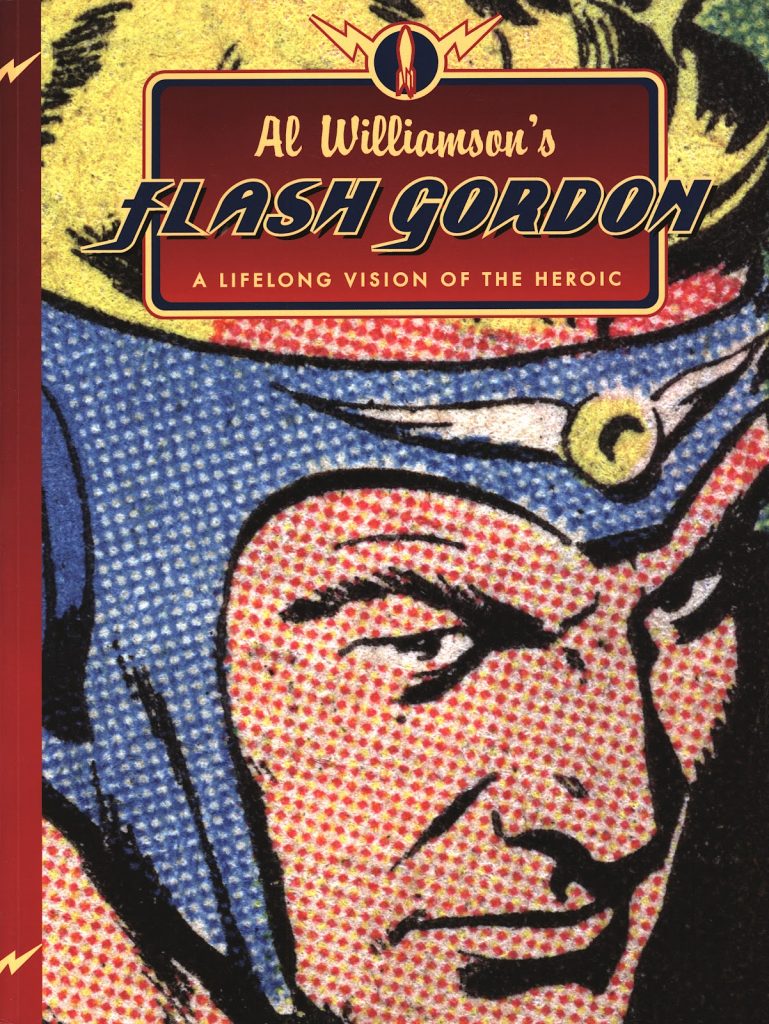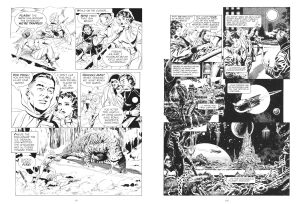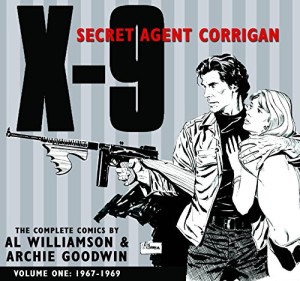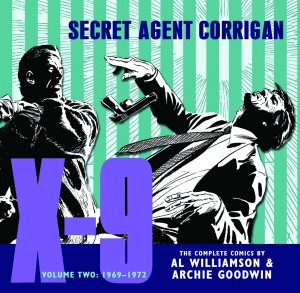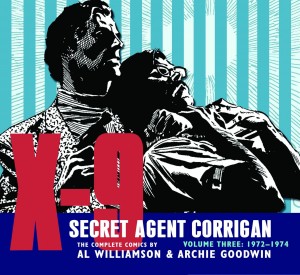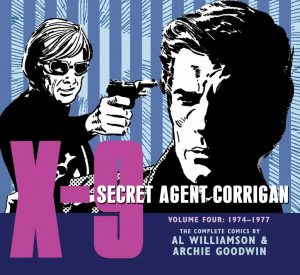Review by Frank Plowright
What a magnificent book this is. Not only does it collect assorted versions of Flash Gordon by Al Williamson, most in book form for the first time, but it presents much of the content shot from the original artwork. Furthermore, it surrounds the comic material with informative contextualising essays combining biography, assessment and recollections.
Growing up in the era he did, Williamson was enraptured by the sheer artistic verve of Alex Raymond’s Flash Gordon newspaper strip, and drawings he produced as a child are presented here alongside later professional work. This isn’t his complete catalogue of Flash Gordon pages, copyright issues presumably preventing the inclusion of anonymous work on 1950s newspaper strips for Dan Barry, but what there is forms a sumptuously satisfying selection.
The earliest strips presented date from 1966, noted in the text as being produced under severe deadline pressures, possibly accounting for the swipes Williamson concedes were lifted from Raymond and Frank Hampson’s Dan Dare. He wrote some stories himself and collaborated with Larry Ivie and Archie Goodwin on others. The first story may be derivative, but it’s astounding for the sheer variety involved, as if Williamson wanted to distil everything he loved about the feature into fifteen pages. It continues that way over the remaining work, the sheer joy of realising a childhood dream responsible for a stunningly drawn naturalistic selection emphasising movement, costume and exotica. These are beautiful, delicate and stunning pages raising the question of the point at which the pupil surpasses the master. However, Dale Arden’s constant state of abduction grates.
Being paid vastly higher advertising rates rather than comic rates accounts for the eccentricity of Williamson drawing five single page Flash Gordon strips for Union Carbide. Here Flash’s solutions to any given problem involve a form of plastic product.
Williamson’s vision of Flash Gordon didn’t coincide with that of film producer Dino De Laurentis, but by then he’d already agreed to draw the adaptation of the 1980 film. However, there’s no lack of enthusiasm about the art for what’s Williamson’s single longest Flash Gordon work. The text notes an awkward final few pages, required by the film’s ending being changed after the art had been drawn, but it’s something only the trained professional eye would pick up on without being informed.
In the text it’s noted that Williamson’s 1990s return to Flash Gordon doesn’t quite match his peak, the figurework not being as accomplished as previously, yet it’s doubtful Marvel produced anything else in 1994 that looked as good (sample art right). Mark Schultz scripts from Williamson’s plot, and it’s a joyful distillation of everything enjoyable about the feature.
It would be fair comment to note Flash’s adventures can be on the nostalgic side and relatively simple. However, it’s also worth mentioning that almost everything about SF adventure comics originated with Raymond’s newspaper strips, and those who grew up with them took the influence many ways. A direct line can be drawn to Star Wars, for instance. What’s beyond argument is the quality of Williamson’s art, despite a few minor quibbles and that elevates already enjoyable ideas to almost five star level.
